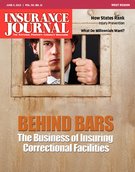Organizers of the national air racing championships secured $100 million in necessary insurance and announced plans to change the September race course for the fastest planes to keep them farther from spectators after last year’s mass-casualty crash near a grandstand.
Reno Air Racing Association Director Mike Houghton said he’ll ask the Federal Aviation Administration for its required permission to move the largest pylon course for the 49th annual championships away from the crowd that typically numbers in the tens of thousands a day.
He said the change would include the softening of some curves to ease the gravitational pull on pilots — including coming out of a stretch called the “Valley of Speed” where planes flying at speeds up to 500 mph gain momentum on the high Sierra plateau north of Reno.
“We had a choice to move the grandstands or some of the racing so we are pushing some of the racing further away,” Houghton said.
“It will make the race course on the turn there more consistent and probably less of a g-strain for the less experienced race pilots,” he said.
Houghton made the announcements after a blue ribbon panel of experts appointed by the association unveiled its list of safety recommendations.
The four-member panel, which included former National Transportation Safety Board chairman Jim Hall, also advised further study of possible age limits for pilots.
Jimmy Leeward was 74 when his World War II-era airplane crashed Sept. 16, killing him and 10 spectators and injuring more than 70 others. Several lawsuits have been filed by spectators.
The panel discussed whether age limits or other increased medical requirements should be imposed, said panel member Nick Sabatini. But he said they decided they were not qualified to make “what are in effect medical recommendations.”
Instead, they urged the association to create a formal position of director of aerospace medicine to review areas such as pilot age and the medical impact of gravitational forces on pilots.
The panel also recommended creation of a formal director of safety.
The association’s event at Reno Stead Airport is the only event of its kind, where planes fly wing-tip-to-wing-tip around an oval, aerial pylon track, sometimes just 50 feet off the ground.
Panel member Jon Sharp, an aeronautical engineer and the winningest pilot in the event’s history, said he likes the plans for the new course layout.
“If I had to guess from what I know about it, the fans won’t notice the difference,” he said. “The planes will be a little bit farther away but they won’t be little dots.”
Was this article valuable?
Here are more articles you may enjoy.


 AIG General Insurance Chairman McElroy to Retire May 1
AIG General Insurance Chairman McElroy to Retire May 1  California Sees Two More Property Insurers Withdraw From Market
California Sees Two More Property Insurers Withdraw From Market  UnitedHealth Says Hackers Possibly Stole Large Number of Americans’ Data
UnitedHealth Says Hackers Possibly Stole Large Number of Americans’ Data  Trump’s Bond Insurer Tells Judge Shortfall Is ‘Inconceivable’
Trump’s Bond Insurer Tells Judge Shortfall Is ‘Inconceivable’ 


